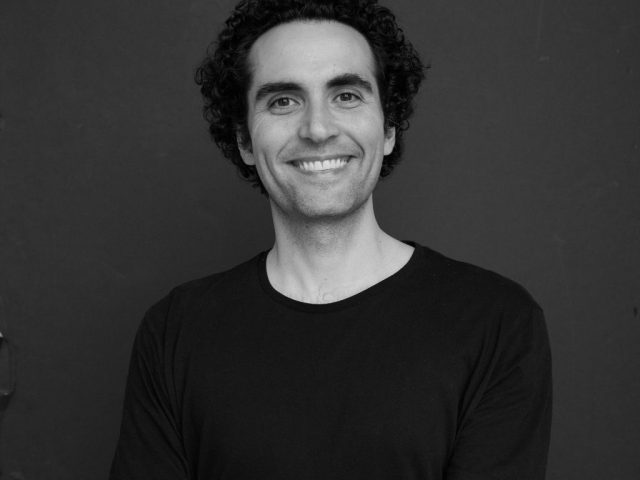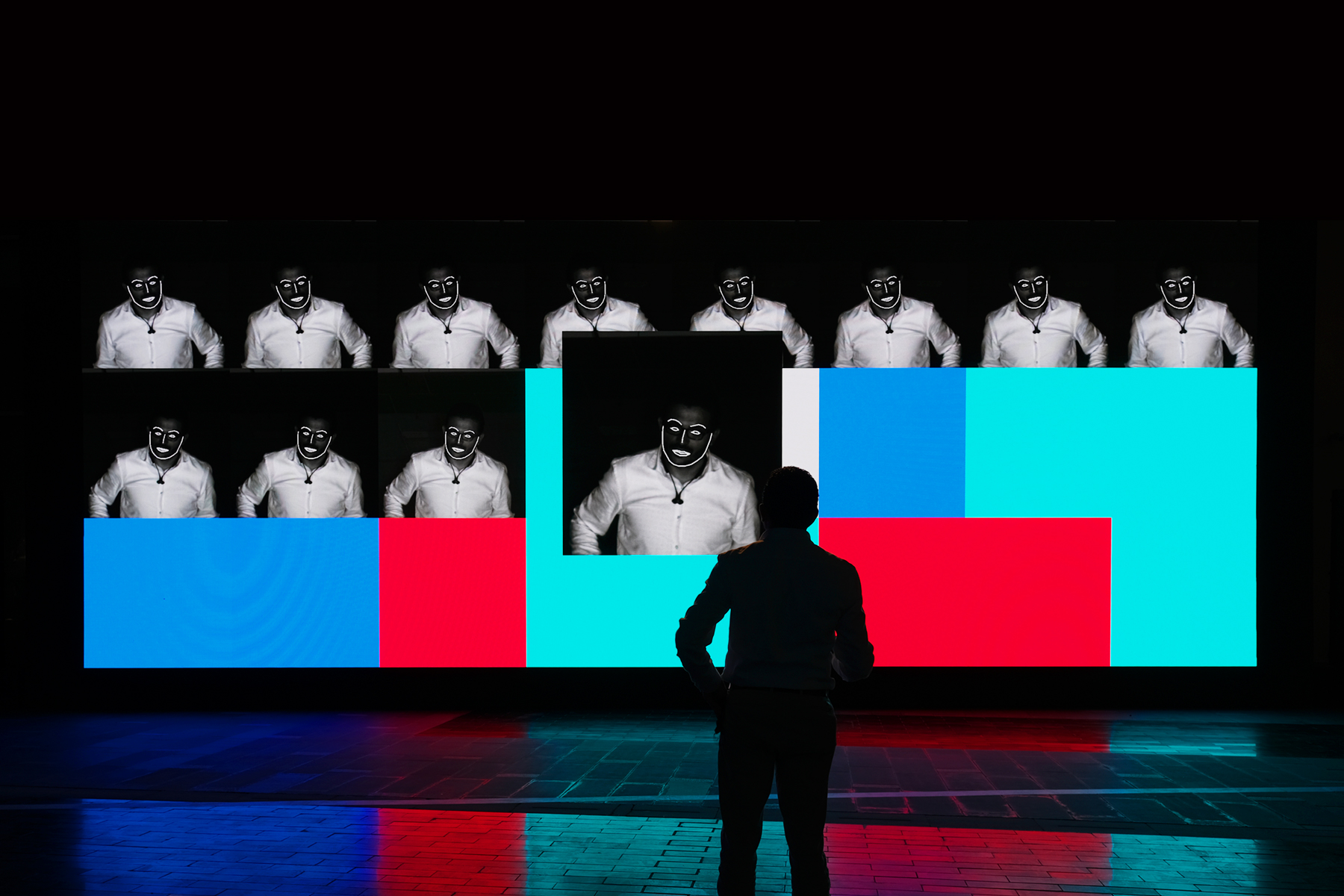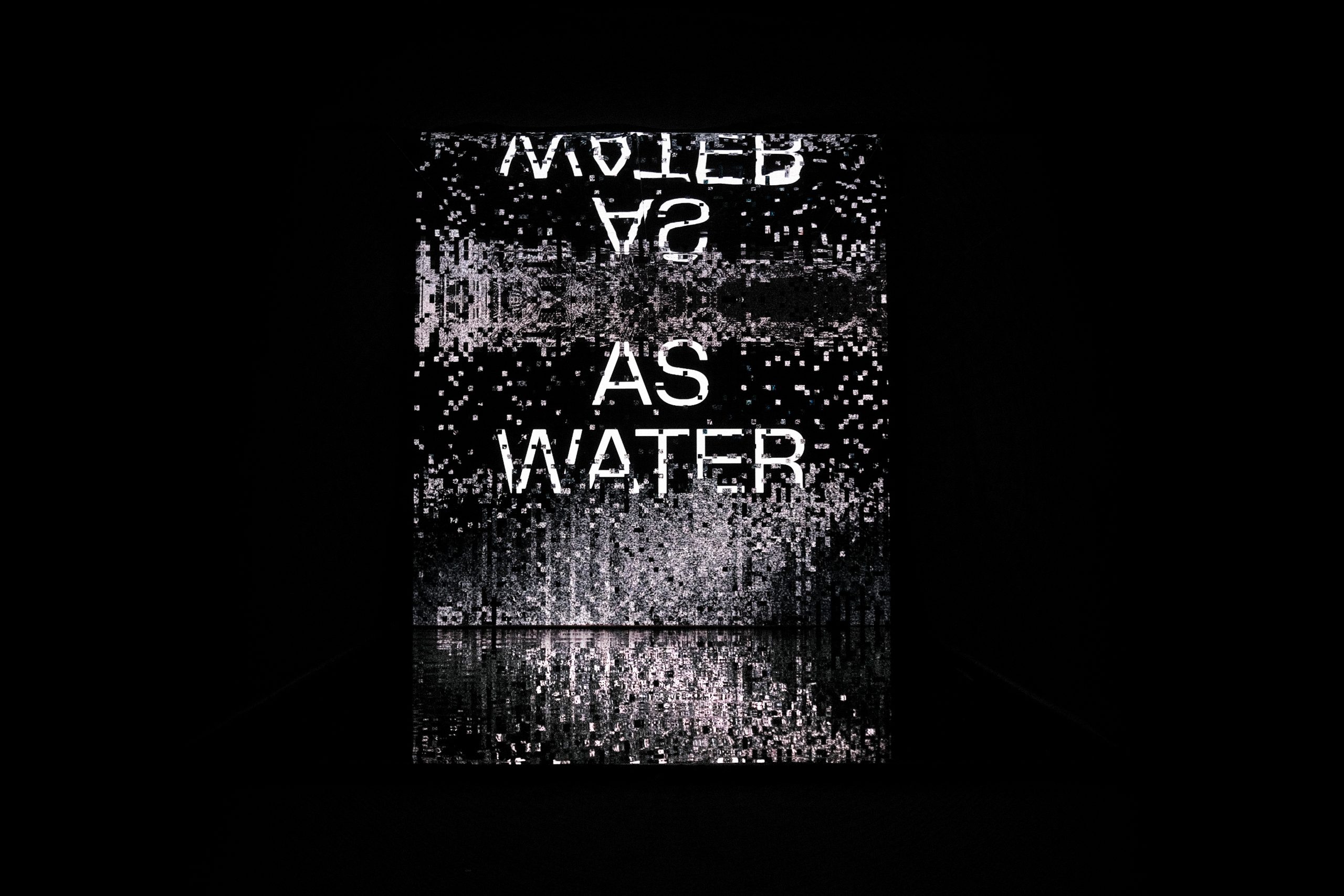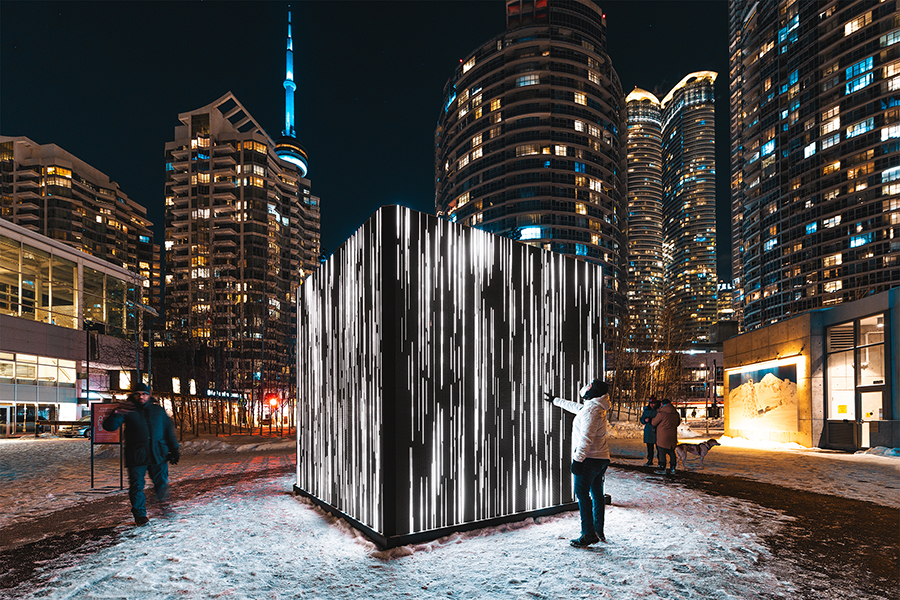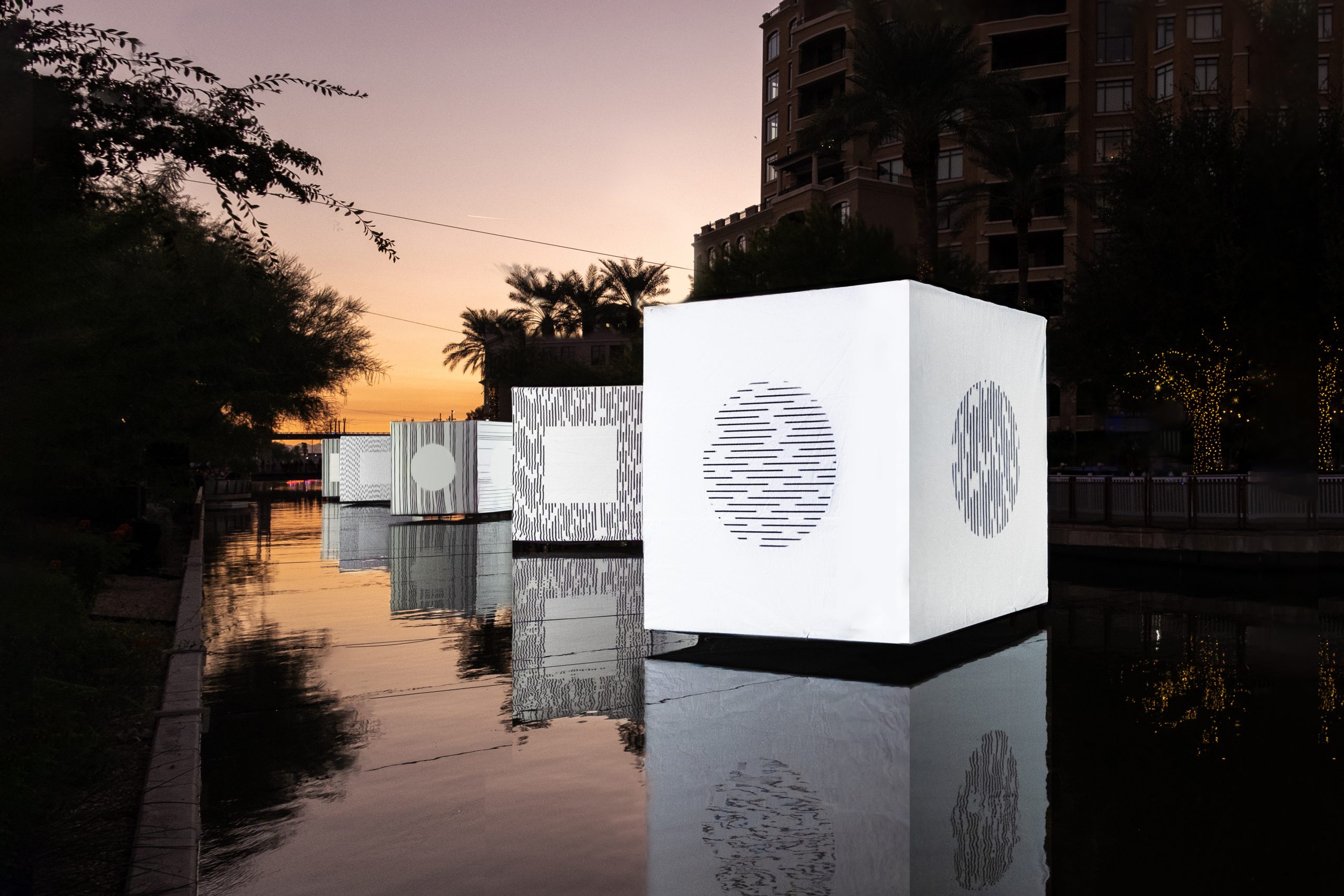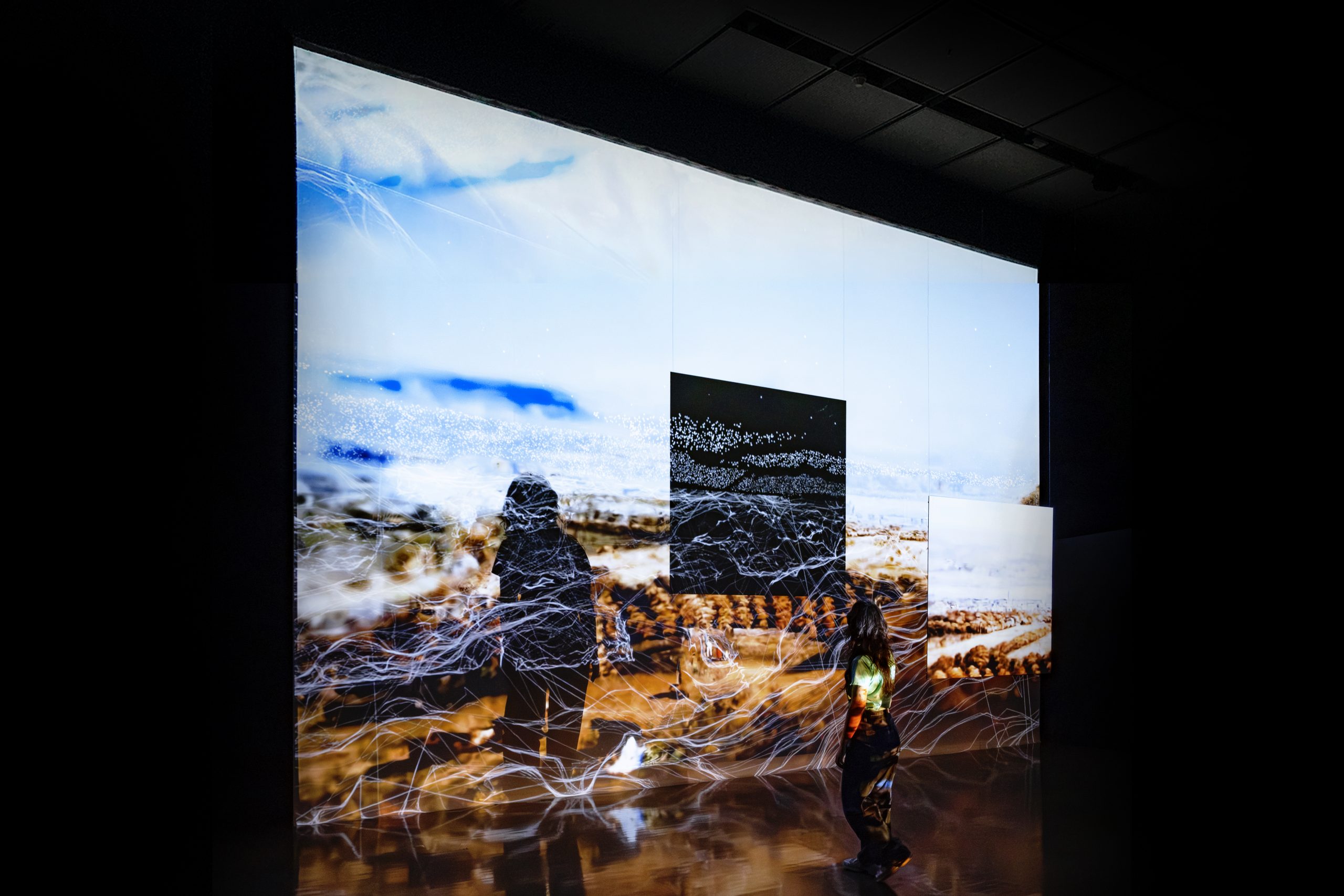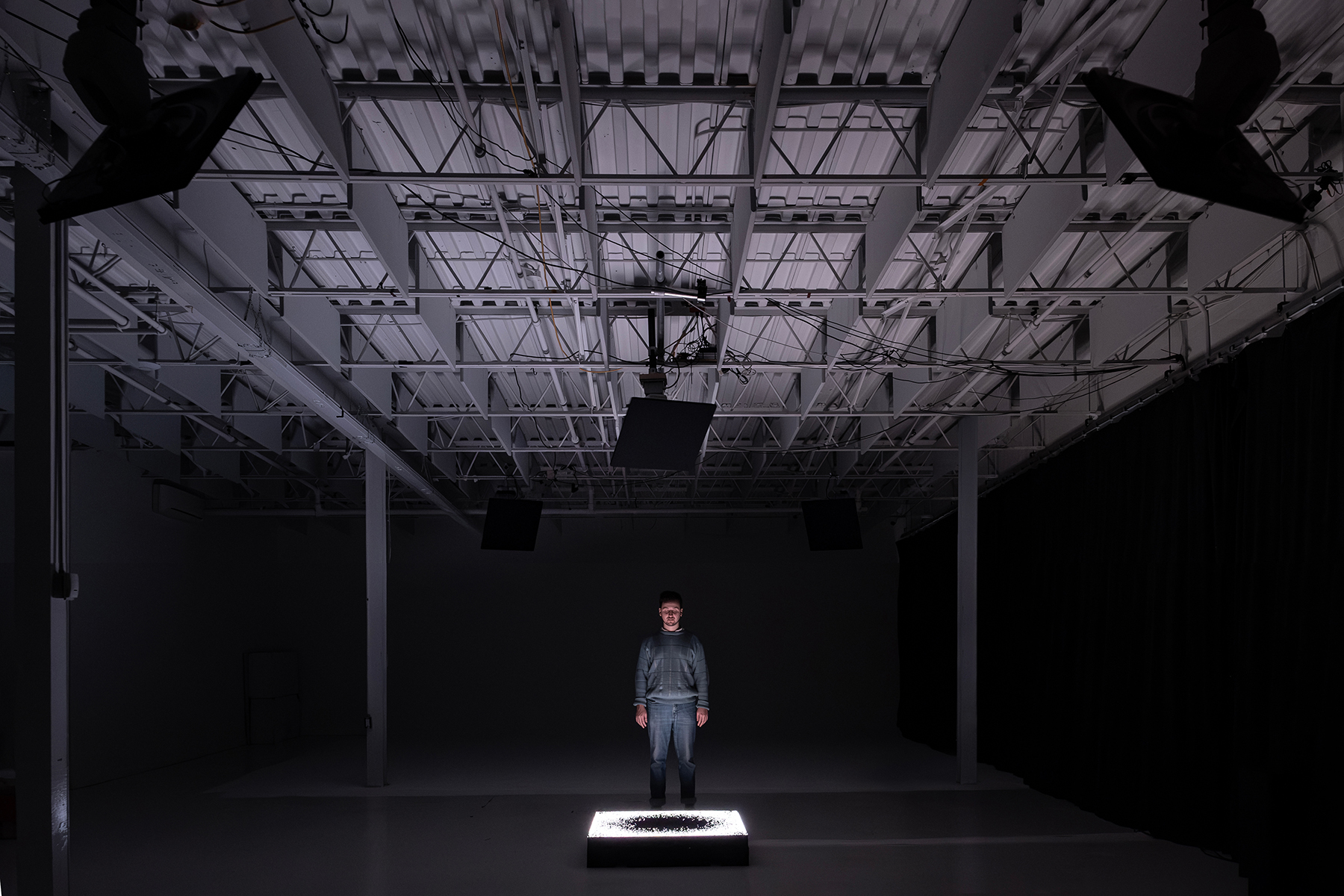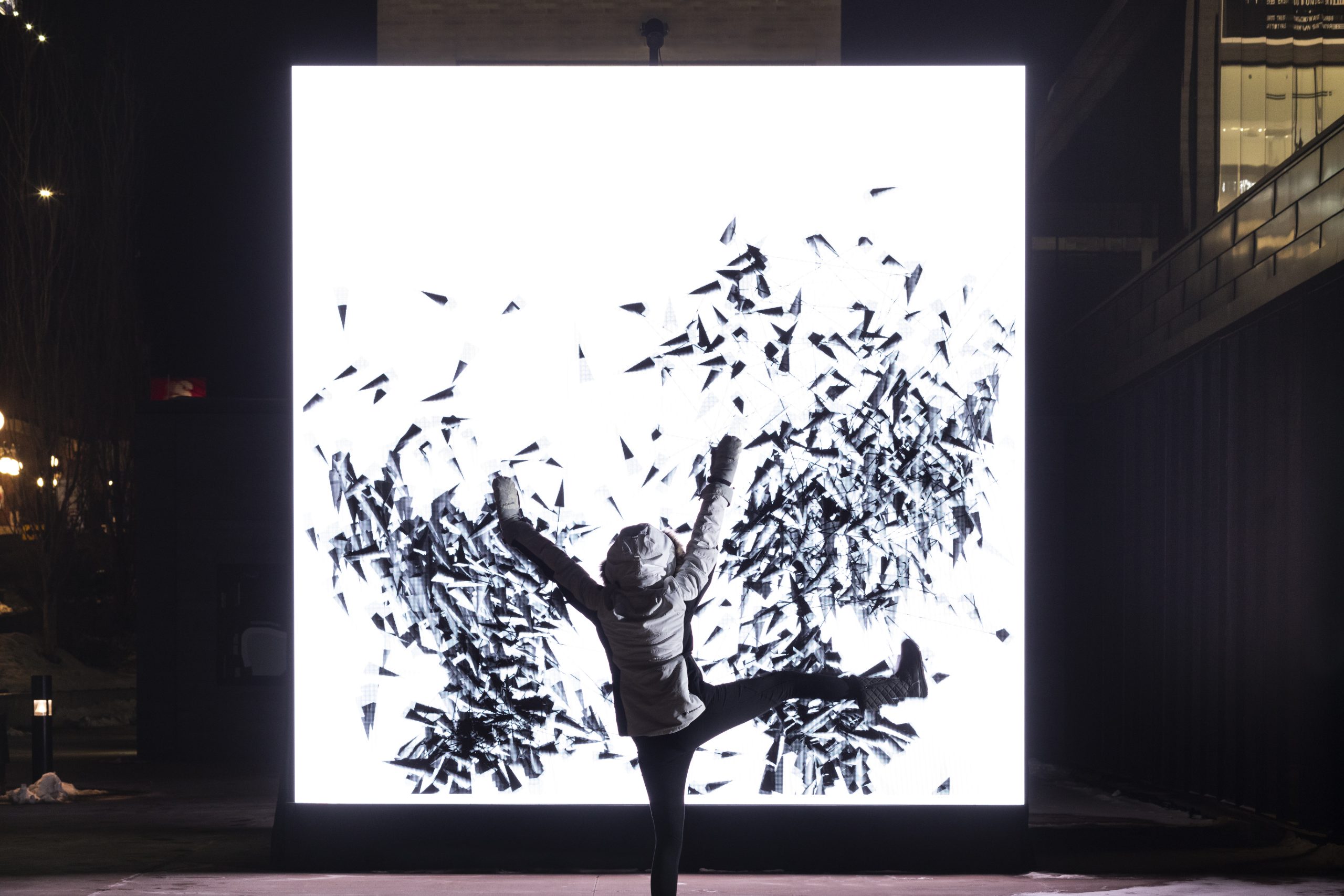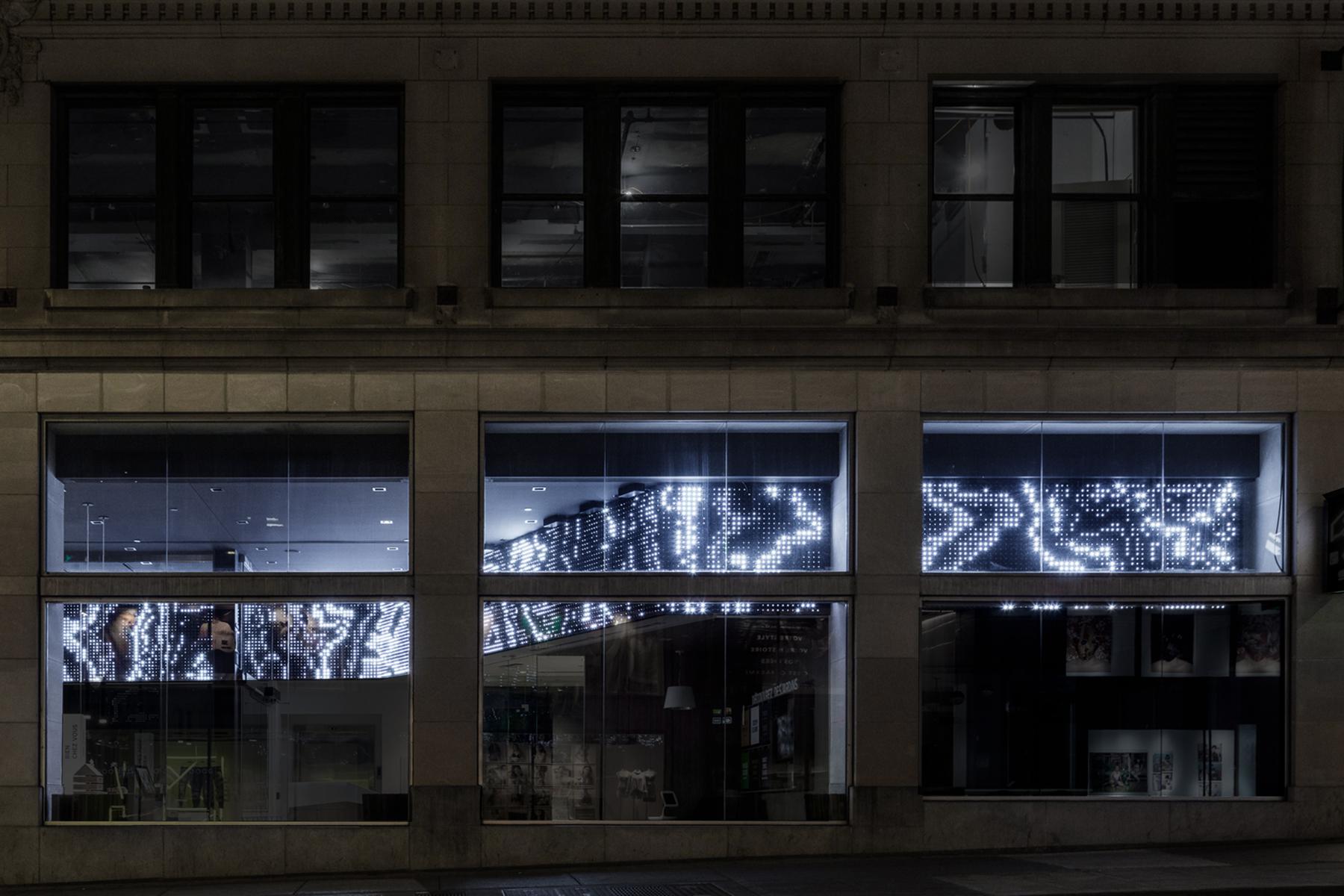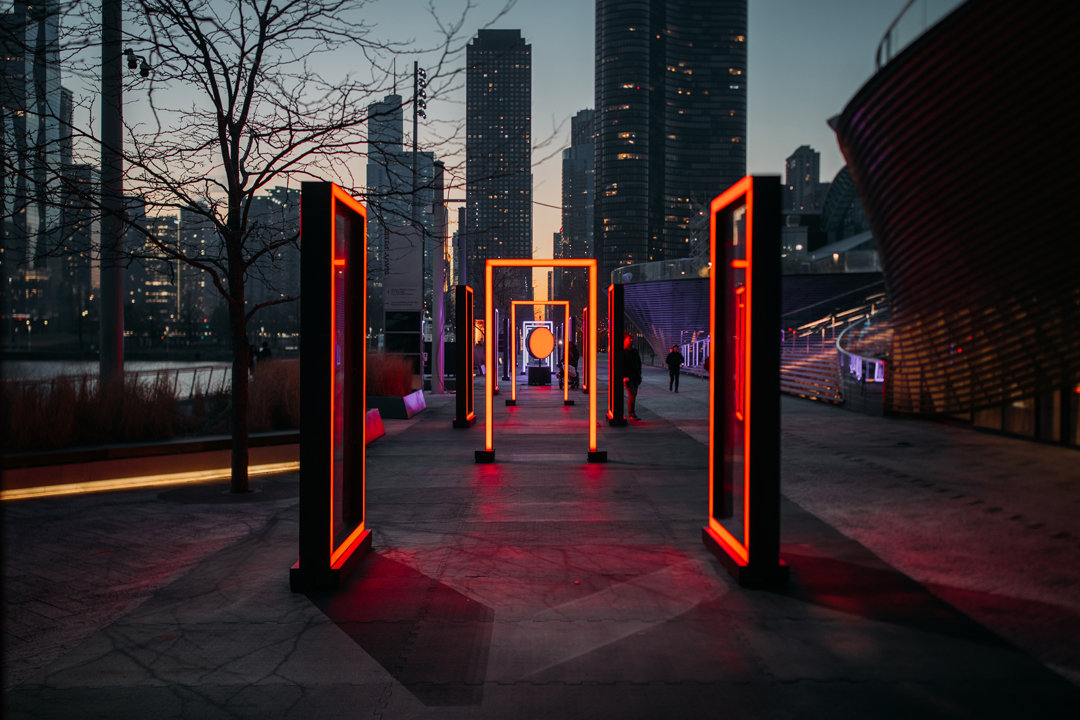ANTIBODIES
As we are becoming increasingly jaded and disconnected from other people, ANTIBODIES reflects on how detached we are during video conference calls – today’s imposed form of social gatherings. It also questions our vulnerability in the face of these overpowering platforms that force us to give up our privacy and the intimacy of real-life interactions we once took for granted. ANTIBODIES is an interactive experience that mimics this phenomenon and creates a similar virtual get-together. As people join, a system tracks the elicited facial expressions of participants, responding with overlaid visual and audio patterns. After each interaction, people’s recorded experiences are added to a gallery of disembodied human beings. Web Version ANTIBODIES is a hybrid artwork: initially taking the form of a website anyone can join at any time, it naturally developed into a physical installation for public spaces too as lockdown measures progressively eased. So far, more than 20,000 people from 48 different countries have taken part in the online experience accessible here: www.antibodies.webcam. Both formats use CURSOR, a proprietary technology combining optics, AI and machine learning in the tracking features. ANTIBODIES is a reflection and critique that clearly manifests the intersect.
